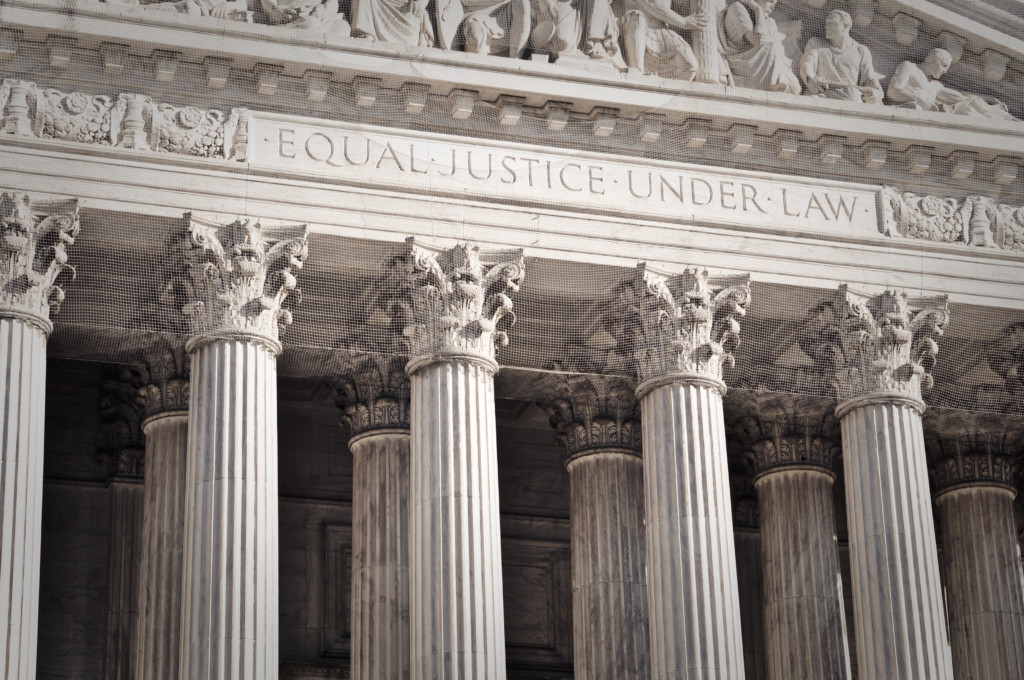
Editor’s note: The U.S. Supreme Court on Wednesday heard oral argument in the latest chapter of the battle over the use of public funding for religious schools. Supporters of such funding argue that the government should not be allowed to discriminate against religious families and schools, while opponents warn that requiring the government to allow public funds to be used for religious schools could harm public education. redefinED executive editor Matt Ladner shares his thoughts in today’s post. Stay tuned for an analysis from Leslie Hiner, vice president of legal affairs at EdChoice, coming next week.
I’m not an attorney, nor do I play one on television. Nevertheless, the transcript of the Espinoza vs. Montana oral arguments in the U.S. Supreme Court make for fascinating reading.
In 2015, the Montana Legislature passed a small scholarship tax credit under which taxpayers donate to groups providing scholarships to students wishing to attend private schools. The state provides the donor with a credit against their state tax burden and the nonprofit collects funds to provide scholarship aid to eligible families.
After the Montana program passed, the Montana Department of Revenue made an administrative ruling that the scholarships could not be used at religious private schools. The amendment reads:
The legislature, counties, cities, towns, school districts, and public corporations shall not make any direct or indirect appropriation or payment from any public fund or monies, or any grant of lands or other property for any sectarian purpose or to aid any church, school, academy, seminary, college, university, or other literary or scientific institution, controlled in whole or in part by any church, sect, or denomination. This section shall not apply to funds from federal sources provided to the state for the express purpose of distribution to non-public education.” (Montana Const. Art. X, § 6)
A group of Montana mothers challenged the administrative ruling in state court, noting that the position of the Montana Department of Revenue was contrary to a number of U.S. Supreme Court rulings requiring government neutrality toward religious groups. The Montana Supreme Courts ruled against the mothers and struck down the entire program. The plaintiffs appealed to the U.S. Supreme Court.
So, let’s get a few things out of the way.
The Montana Department of Revenue ought not to have made this ruling in the first place. The Montana Legislature did not make an appropriation, and the purpose of what it did was not to aid any church or school, but rather to aid students and families.
Read the argument in its entirety, but in my book, the crucial exchange came in a question from Justice Kavanaugh to the attorney defending Montana’s action:
JUSTICE KAVANAUGH: But this is a – this is a school, in education, there satisfies the compulsory education laws of the state, correct?
UNIKOWSKY: That’s true.
This exchange reveals that the scholarship program fulfills a public purpose in providing a K-12 education to students. For however long Montana has had compulsory K-12 attendance laws is the same period that attendance at a private school has satisfied that state requirement.
The U.S. Supreme Court has established a standard of government neutrality toward religious groups, Trinity Lutheran Church of Columbia Inc. v. Comer being the most recent. Thus, a Montana fire department would be engaging in unconstitutional religious discrimination if it refused to put out a fire in a burning place of worship for fear of “aiding” religion.
Several justices further noted that if Montana decided to establish a scholarship program but then decided to strike it down based upon the race of the recipients, that would represent unconstitutional discrimination. Why, they asked, should the Montana Supreme Court be allowed to strike down this neutral program simply because some of the families would choose a religious education?
Disbanding a program simply because some of the beneficiaries would be religious lies at the heart of this case.
The Institute of Justice’s Dick Komer summed it up well in his closing:
What we’re saying here is that Trinity – what Trinity Lutheran says, the state can’t discriminate on the basis of religion. The decision is crystal clear when you read it that that is what they are doing in this case. They focus on the religious affiliation or religious nature of the schools. They are not talking about what the schools do. They are talking about what the schools are.
Second, Zelman has already answered the question about who this program is aiding. It’s not aiding the schools. It is aiding the parents. You have a choice to make about the parents here. You can either view them as mere inconsequential conduits through which public funds flow to the religious schools they choose or you can regard them, as you did in Zelman, as free and independent decision-makers who are being given the power to choose a religious education or a secular education in private schools.
We’ll learn the ruling of the justices later this year.


